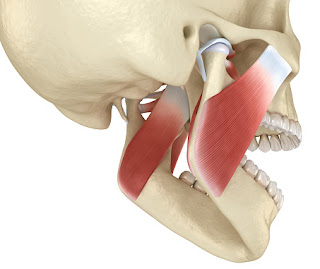Causes And How To Prevent Neck Pain
Neck pain is a common complaint. Neck muscles can be strained from poor posture — whether it's leaning over your computer or hunching over your workbench. Osteoarthritis also is a common cause of neck pain. Rarely, neck pain can be a symptom of a more serious problem. Seek medical care if your neck pain is accompanied by numbness or loss of strength in your arms or hands or if you have shooting pain into your shoulder or down your arm.
Causes of neck pain
Neck pain or stiffness can happen for a variety of reasons. Muscle tension and strain. This is usually due to activities and behaviors such as:
poor posture
working at a desk for too long without changing position
sleeping with your neck in a bad position
jerking your neck during exercise
Injury
The neck is particularly vulnerable to injury, especially in falls, car accidents, and sports, where the muscles and ligaments of the neck are forced to move outside of their normal range.
If the neck bones (cervical vertebrae) are fractured, the spinal cord may also be damaged. Neck injury due to sudden jerking of the head is commonly called whiplash.
Heart attack
Neck pain can also be a symptom of a heart attack, but it often presents with other symptoms of a heart attack, such as:
shortness of breath
sweating
nausea
vomiting
arm or jaw pain
If your neck hurts and you have other symptoms of heart attack, call an ambulance or go to the emergency room immediately.
Meningitis
Meningitis is an inflammation of the thin tissue that surrounds the brain and spinal cord. In people who have meningitis, a fever and a headache often occur with a stiff neck. Meningitis can be fatal and is a medical emergency.
If you have the symptoms of meningitis, seek help immediately.
Other causes
Other causes include the following:
Rheumatoid arthritis causes pain, swelling of the joints, and bone spurs. When these occur in the neck area, neck pain can result.
Osteoporosis weakens bones and can lead to small fractures. This condition often happens in hands or knees, but it can also occur in the neck.
Fibromyalgia is a condition that causes muscle pain throughout the body, especially in the neck and shoulder region.
As you age, the cervical discs can degenerate. This is known as spondylosis, or osteoarthritis of the neck. This can narrow the space between the vertebrae. It also adds stress to your joints.
When a disk protrudes, as from a trauma or injury, it may add pressure on the spinal cord or nerve roots. This is called a herniated cervical disk, also known as a ruptured or slipped disk.
Spinal stenosis occurs when the spinal column narrows and causes pressure on the spinal cord or the nerve roots as it exits the vertebrae. This can be due to long-term inflammation caused by arthritis or other conditions.
In rare instances, neck stiffness or pain occurs due to:
congenital abnormalities
infections
abscesses
tumors
cancer of the spine
Prevention
Most neck pain is associated with poor posture combined with age-related wear and tear. To help prevent neck pain, keep your head centered over your spine. Some simple changes in your daily routine may help. Consider trying to:
Use good posture. When standing and sitting, be sure your shoulders are in a straight line over your hips and your ears are directly over your shoulders.
Take frequent breaks. If you travel long distances or work long hours at your computer, get up, move around and stretch your neck and shoulders.
Adjust your desk, chair and computer so that the monitor is at eye level. Knees should be slightly lower than hips. Use your chair's armrests.
Avoid tucking the phone between your ear and shoulder when you talk. Use a headset or speakerphone instead.
If you smoke, quit. Smoking can put you at higher risk of developing neck pain.
Avoid carrying heavy bags with straps over your shoulder. The weight can strain your neck.
Sleep in a good position. Your head and neck should be aligned with your body. Use a small pillow under your neck. Try sleeping on your back with your thighs elevated on pillows, which will flatten your spinal muscles.



Comments
Post a Comment